(3) 2009 Fukamushi Supreme Shincha
Posted on 31 July 2009
2008 Gyokuro Kame-Jiru-Shi (O-Cha)
2008 Gyokuro Tama Homare (Marukyu)
2008 Kabusecha Takamado (Marukyu)
2008 Karigane Otowa (Marukyu)
2008 Sencha Miyabi (O-Cha)
2009 Shincha Shigaraki (Marukyu)
2009 Shincha Shuei (Marukyu)
2009 Shincha Uji Gold (Marukyu)
2009 Shincha Yutakamidori (O-Cha)
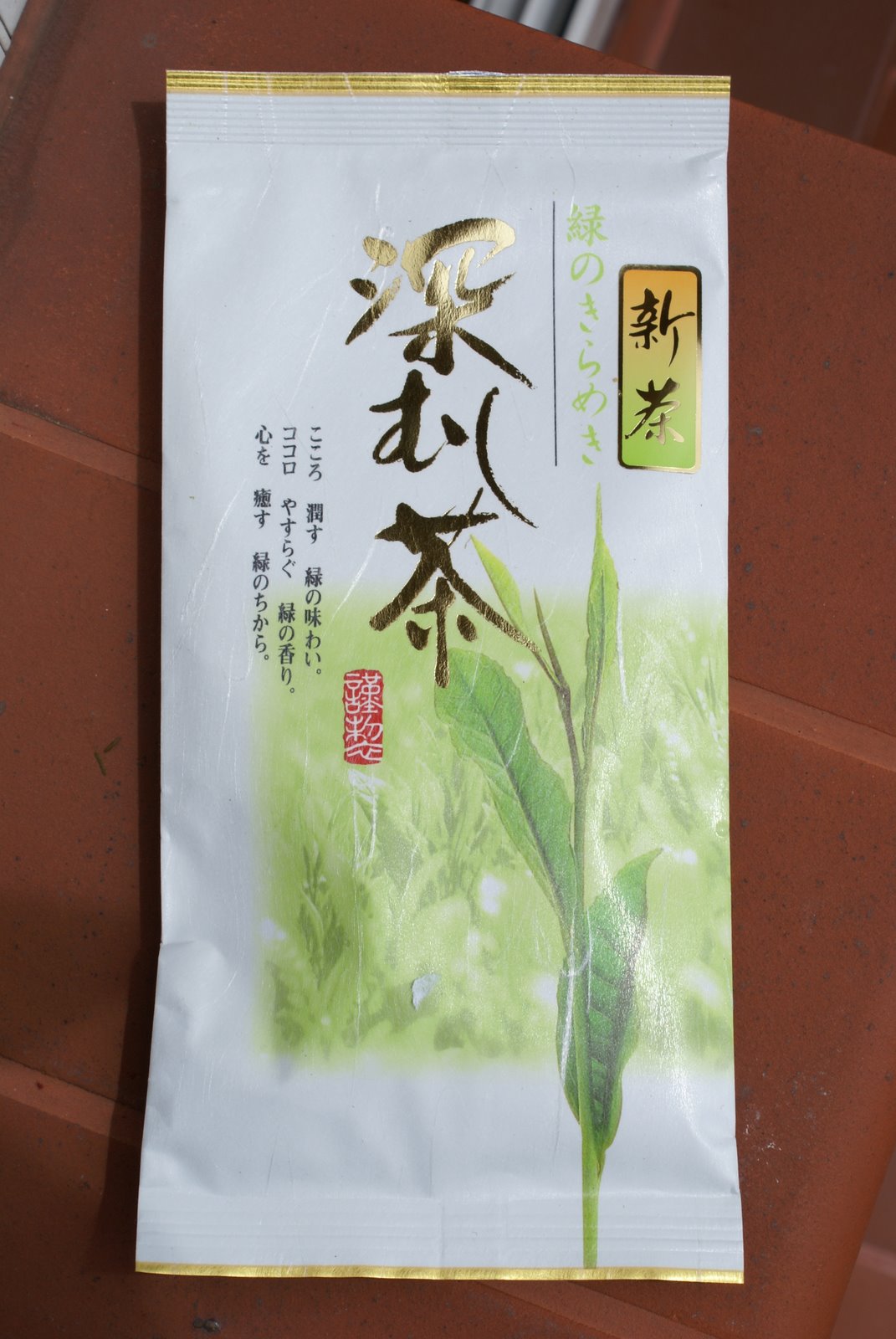
Let’s have a look at the 2009 Shincha Fukamushi Supreme. It’s another best-selling tea from O-Cha. Produced from the Yabukita varietal in the central region of Shizuoka. Priced at $23 / 100g.
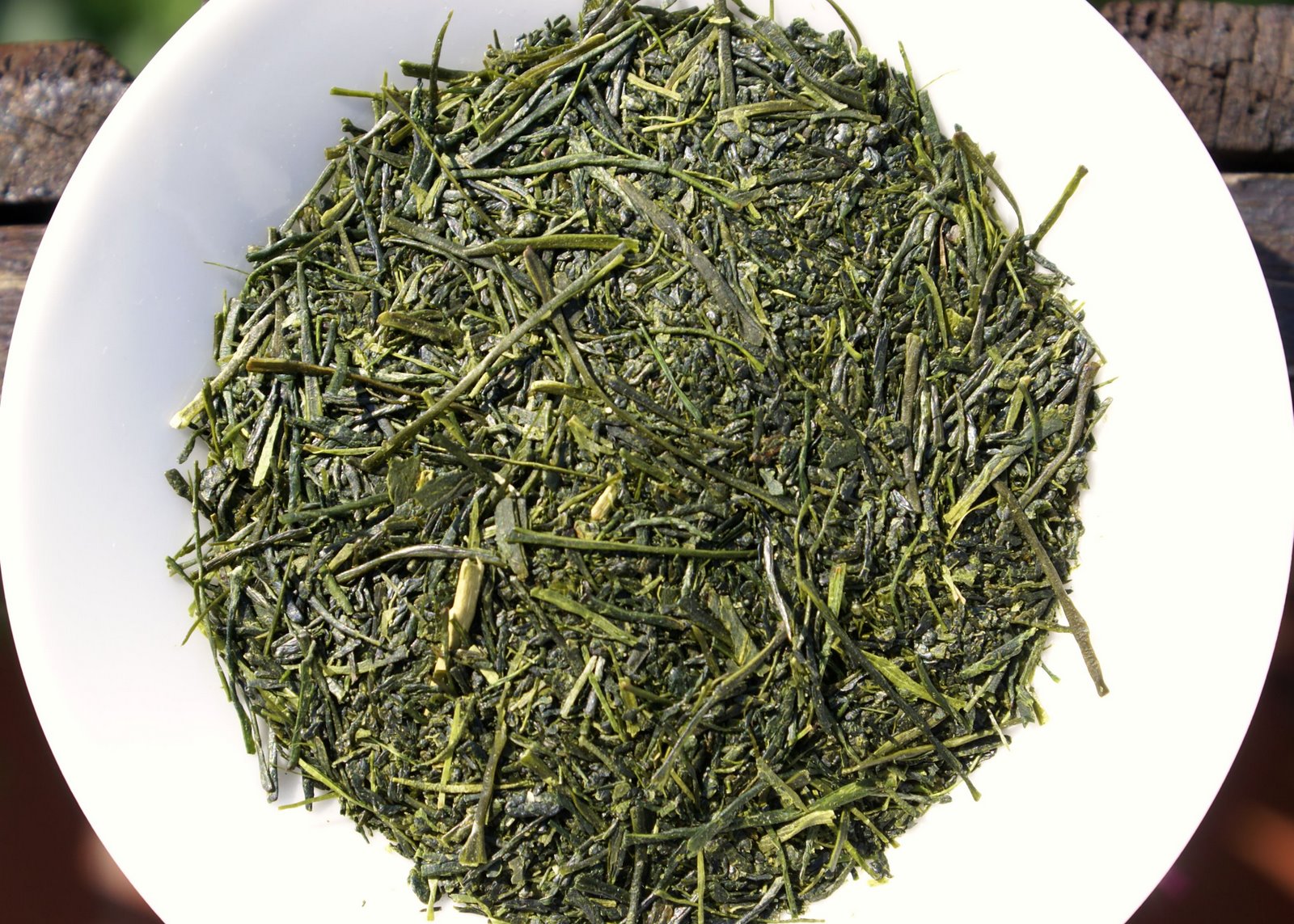
Dry leaf: living up to its fukamushi [heavy- or long-steamed] name, this is very fragmented with few intact leaves. If you look at yesterday’s photo of the 2009 Yutakamidori, the difference is subtle but visible, as between chumushi [medium-steamed] and fukamushi. The most remarkable thing about this Fukamushi Supreme is the dry leaf aroma. It’s among the most intensely perfumed teas I’ve encountered. It’s a cornucopia of tangy exotic fruits, citrus, pomelo, melon, guyava, kumquat, you name it, with a subdued background grassiness and mild roast; a bouquet that positively reminds me of Marlborough Sauvignon Blanc wine from New Zealand. (The aroma also shows you how vital freshness is to this type of tea; four weeks after I opened the pack, it’s not quite the same thing, even stored in a double-lid tin).
Brewed as usually in the present series of reviews (2g / 120ml of water / 70C / 60 seconds), this tea pours a lighter colour than expected. While some chopped leaf residue makes it into the cup, the colour remains a pale green. It’s only with the second infusion (even if very short) that you get that legendary deep opaque emerald colour, like unfiltered olive oil from Central Italy:
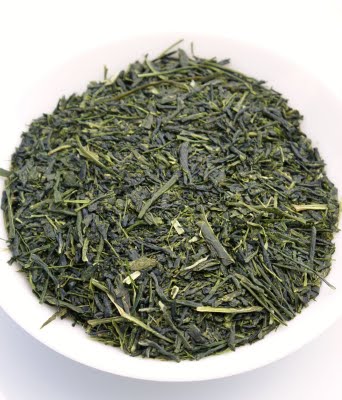
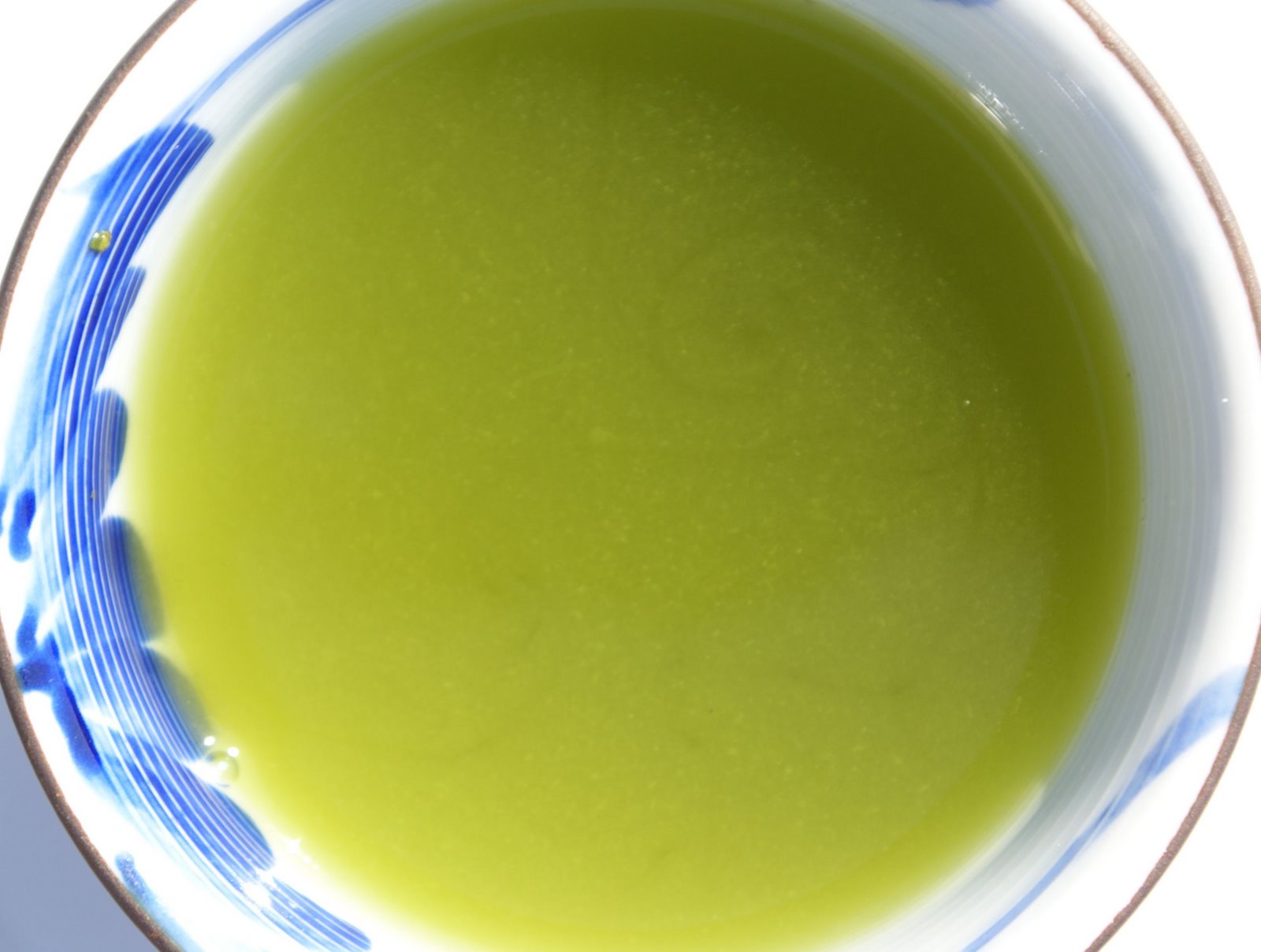
Infusion no. 1 (60 seconds @ 70C) and 2 (25 seconds @ 80C).
The aroma is unfruity, fairly brothy, with a distinctive umami character. It’s also rather glutinous in texture from infusion #2 onwards. A dense, chewy tea with some dryness on the finish (as much a factor of astringency as texture). Interestingly, it isn’t exactly crisp, and technically has little acidity; the mouthfeel is similar to a light broth (if you cook it without lemon!) or miso soup. The melony fruit at core is soft and sweetish though, not citrusy, remaining the single fruit reference even in overinfusions at 95C. Second infusions at their densest move towards a more vegetal, chewy bean character (French beans).
Many Japanese tea drinkers have a preference for the full-on style of fukamushi teas, and I can see why this particular Fukamushi Supreme is so popular. Personally, I much like asamushi [short-steamed] Japanese greens, and so approached this tea with no positive bias. It is wholesome, of obviously good quality, and I’m perhaps doing it injustice expecting a bit more poise and zest.
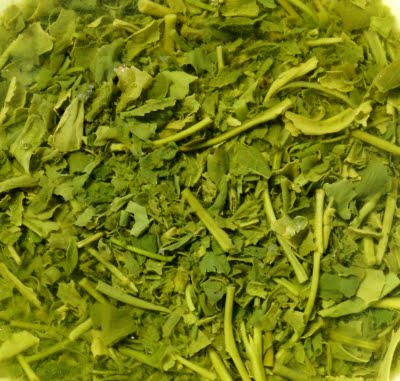 As an aside, it’s one of the most short-lived teas I’ve come across, in the sense of an obvious drop in quality and complexity within a few weeks from opening the (nitrogen-filled as per O-Cha declaration) pack. While my inaugural sessions revealed some limey and grassy tang on the finish and were fairly vivid, four weeks later I am left with a simpler, flatter profile. This is understandable, fukamushi being one of the most fragmented leaf teas out there, and with the higher surface of exposure to air it just loses freshness so much more quickly than whole-leaf stuff.
As an aside, it’s one of the most short-lived teas I’ve come across, in the sense of an obvious drop in quality and complexity within a few weeks from opening the (nitrogen-filled as per O-Cha declaration) pack. While my inaugural sessions revealed some limey and grassy tang on the finish and were fairly vivid, four weeks later I am left with a simpler, flatter profile. This is understandable, fukamushi being one of the most fragmented leaf teas out there, and with the higher surface of exposure to air it just loses freshness so much more quickly than whole-leaf stuff.

